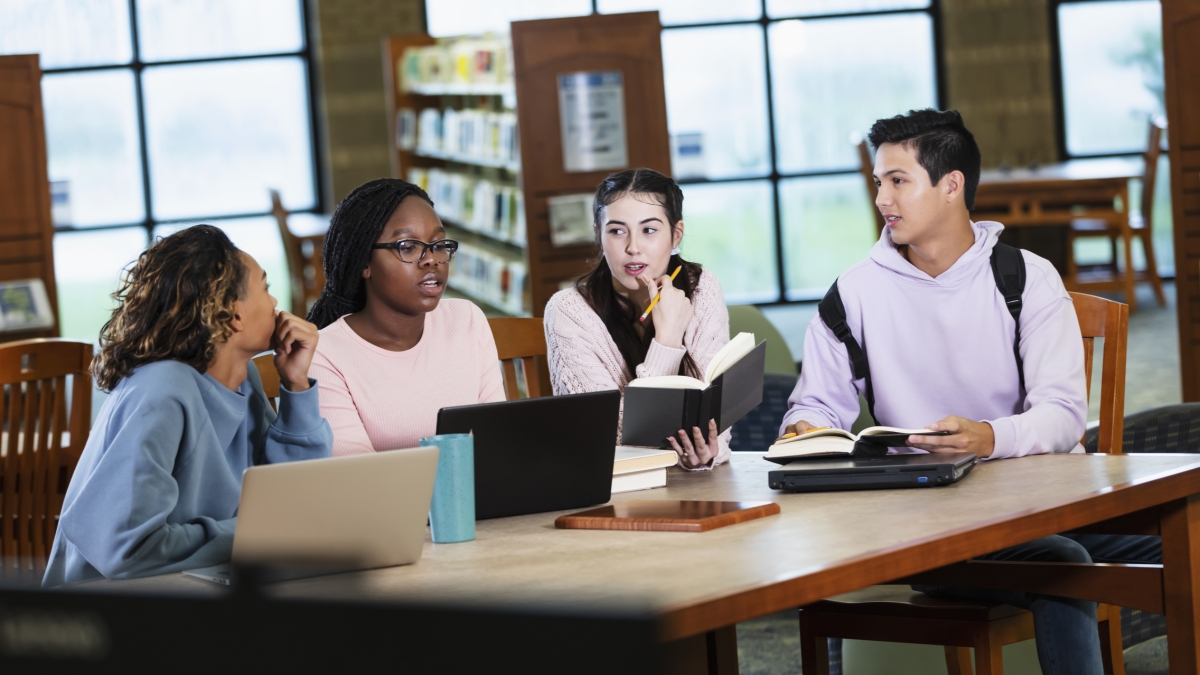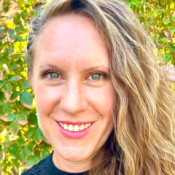ASU faculty produce book about hands-on program that teaches democracy through budgeting decisions

Photo courtesy of iStock/Getty Images
A new book edited by Arizona State University faculty details a model for civic education in which students learn about democracy through the actual practice of it. Instead of listening to lectures about allocating public dollars, students decide how to spend the money themselves on projects to improve their campuses.
“Educating for Democracy: The Case for Participatory Budgeting in Schools” was published in August by Edward Elgar Publishing. ASU School of Public Affairs Professor Daniel Schugurensky and Tara Bartlett, a clinical professor in the Mary Lou Fulton Teachers College, shared editing responsibilities.
Participatory budgeting has included residents in decisions about resource allocations in thousands of cities and towns worldwide for over 30 years, including more recently through School Participatory Budgeting (SPB).
The book brings together researchers and educators from several nations. The chapters share insights about students’ experiences and the impacts of SPB. The authors note the program’s success in amplifying student voices and their capacity for deliberate decision-making, all while improving their campuses’ infrastructure and climate.
In the United States, the first SPB process took place in 2013 at Bioscience High School in downtown Phoenix. Since then, the process has been adopted by over 70 schools in Arizona and expanded to hundreds of schools throughout the country. Schugurensky and Bartlett are affiliated with the program, which is hosted by the Watts College.
Each year, thousands of students on different continents are engaging in SPB, researching and considering options for responsible allocation of resources and deliberating about trade-offs before deciding how to spend the money. In 2021, ASU President Michael Crow honored the program with the university’s President’s Medal for Social Embeddedness.
We asked Schugurensky and Bartlett to talk about the book.
Editor's note: Answers have been edited for length and/or clarity.
Question: SPB has been in existence for many years. What gave rise to the idea of a book about it?
Daniel Schugurensky: SPB is an original initiative because it combines citizenship education, civic engagement and school democracy. It is also one of the few civic engagement programs that involves all students in the school community. It is also effective in promoting student voice and responsibility because it is an authentic learning experience with real resources and real impact. The book is helping to create a global network of SPB practitioners and researchers.
Q: SPB is not a hypothetical exercise. It involves deciding how to spend real money on a real project. What does SPB teach about democracy beyond learning how to evaluate spending proposals and decide on the best one?
Schugurensky: Evaluating proposals and voting is only part of the learning. By the way, those proposals come from the students themselves, which means that they learn to identify needs, translate them into proposals, develop them into viable projects, consider pros and cons of each and deliberate before voting. There is significant learning there, but the learning goes beyond that.
Q: What other learning have you identified?
Schugurensky: In SPB, students learn about democracy through democracy. Our research identified 40 indicators of civic learning and change, in four categories: civic knowledge, attitudes, skills and practices. Among other things, we see increases in prosocial values, collaboration, conflict resolution, public speaking, listening, self-confidence, political efficacy, leadership and teamwork. Students also learn rights and responsibilities, and trade-offs in decision-making.
Beyond civic learning, students improve research and financial literacy skills and make connections to curriculum standards in areas like social studies, math, language and the arts.
Q: The book discusses how many nations are dealing with a growing disconnection between people and their leaders. How does SPB help young people find ways to restore that connection?
Bartlett: Absolutely, polling and research cite growing mistrust and engagement apathy as contributors to the degeneration of democracy. We think that SPB can provide young people with a positive democratic experience and bolster the knowledge, attitudes and skills needed to engage in and safeguard democratic practices and institutions.
The expanding research on SPB, much of it highlighted in the book, shows promise in developing knowledge of democratic processes, stronger relationships with peers and adults within the school, motivations and awareness to address issues and injustices, empathy and social cohesion, and skills in public speaking, leadership and critical thinking.
Q: Talk about some of the most unusual spending decisions students have made in SPB.
Bartlett: The SPB process functions as a conduit for student concerns and desires for their school community. Some of the more common spending decisions include shade structures, water bottle refill stations, bathroom improvements and campus beautification ideas like school gardens and murals.
There have been some creative ideas, too, such as microwaves for student use at lunch to warm food brought from home, solar panel charging stations for student devices and a school therapy dog — which, as the winning project, the district then rolled out across all its schools.
One notable project was a watto (Indigenous shade structure) constructed in partnership with the Tohono O’odham tribe. Overall, the spending decisions reflect a priority on student well-being and the climate.
Q: Since it was first implemented in the U.S. in downtown Phoenix in 2013, SPB has enjoyed considerable growth around the world. Tell how the book advocates for the program’s future expansion.
Schugurensky: Before we started the book, we were intrigued by the enthusiasm about this process in the school communities we work with in Arizona. Students were engaged. Teachers and parents were impressed by the changes they witnessed among the kids. Principals and superintendents noted improvements in school climate. We were impressed by the quick adoption of SPB by schools in Arizona and throughout the country without any national agency promoting it.
Our research found several positive impacts when the program was well implemented. Talking with practitioners and researchers from other countries, we heard similar stories. Some of them participated in the book, and all chapter contributors agree that the model is not perfect but has great potential to be adapted to different contexts and refined over time.
It is one of the few civic education programs that involves the entire school community using a project-based learning approach and authentic deliberation and decision-making. It is also a malleable process that allows schools to bring innovations and improvements in each iteration.
More Arts, humanities and education

Local traffic boxes get a colorful makeover
A team of Arizona State University students recently helped transform bland, beige traffic boxes in Chandler into colorful works of public art. “It’s amazing,” said ASU student Sarai…

2 ASU professors, alumnus named 2025 Guggenheim Fellows
Two Arizona State University professors and a university alumnus have been named 2025 Guggenheim Fellows.Regents Professor Sir Jonathan Bate, English Professor of Practice Larissa Fasthorse and…

No argument: ASU-led project improves high school students' writing skills
Students in the freshman English class at Phoenix Trevor G. Browne High School often pop the question to teacher Rocio Rivas.No, not that one.This one:“How is this going to help me?”When Rivas…



